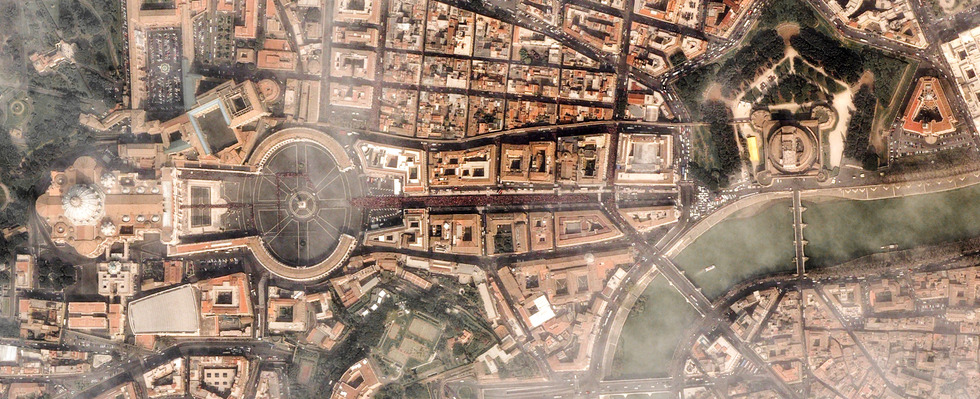Vatican: Pope Francis and the Way of Reform
Andrea Gagliarducci FAITH MAGAZINE September-October 2014
Pope Francis and the Way of Reform
Reform is filling the autumn air here in Rome. The first modification to Pastor Bonus, the 1988 pastoral constitution that regulates the functions and tasks of the offices of the Roman Curia, came on July 9 with the transfer of the ordinary section of the Administration for the Patrimony of the Apostolic See (APSA) to the Secretariat for Economy. Other modifications are yet to come. At a first glance, such reforms will mostly be an internal and aimed at creating a better functioning Roman Curia. So the new draft of Pastor Bonus will change structures but not the fundamental purpose of the Curia.
When they met for their pre-conclave meetings back in 2013, the College of Cardinals focused much of their discussion on the dysfunctionality of the Roman Curia. Many of them asked for more participation on the part of cardinals living beyond Rome in the Curia’s decision making processes. Others stressed the need to restore the battered image of the Church through better communications. So, to a large extent, Pope Francis is presently merely following the promptings of those pre-conclave meetings.
Hence his appointment of a Council of Cardinals to advise him on curial reform; hence, the establishment of two Pontifical Commissions of Reference for both the Institute for Religious Works (CRIOR) and the Vatican’s economic administration (COSEA); hence, the first decisions of reform, which mostly dealt with economic issues; hence, finally, the establishment of a committee to study how best to re-organise Vatican communications. This will probably lead to the establishment of a new umbrella body which will, for the first time, gather together all the branches of Vatican communication and, finally, push the Holy See into the digital age.
Cardinal George Pell from Australia is the real star of the show since he has been taking on much of the burden of the initial reforms. He is the Prefect of the Secretariat for Economy which Pope Francis established together with a Council for the Economy (composed by eight cardinals and seven lay people) on February 24 when the Motu Proprio “Fidelis Dispensator et Prudens” was promulgated.
So here are the most significant changes: APSA has been divided in two sections, the “ordinary” and the “extraordinary”. The first manages the real estate of the Vatican (in the end, trivial accounting) while the second takes care of the financial side of things.
The ordinary section has been transferred to the Secretariat for the Economy under the capable watch of Australian layman Danny Casey. He was the right-hand man to Cardinal Pell for many years at the Archdiocese of Sydney. In Rome, Casey will be in charge of project management.
The extraordinary section will be shaped so that it will eventually function as a real “Central Bank”. Its assets will be transferred to a new body entitled The Vatican Asset Management. This will also manage the assets of the Institute for Religious Works. Those IOR reforms will take three years and should make of the so-called “Vatican Bank” a financial services body rather than one with a portfolio of assets.
To carry out the IOR reforms, a new lay board, entitled the Council of Superintendence, has been established. The new president is a Frenchman by the name of Jean Baptiste de Franssu, an expert in mergers and acquisitions. The board is to be composed of five others. At the moment, the members of the new board include Mary-Ann Glendon from the USA, Clemens Boersig of Germany and Britain’s Sir Michael Hitze. The two remaining vacancies will be filled in the coming months.
Proposals for the reform of the Vatican’s media branch will be made within 12 months by a committee appointed for that very purpose. Their remit is to bring in more revenue from the Vatican’s media and to bring it up to date in the way it communicates with the wider world. The two recent successes that could give a hint of things to come include the Holy Father’s Twitter account and the popular “Pope App”. The committee is to be chaired by Lord Chris Patten. The former Conservative MP is also Chancellor of Oxford University and, until this year, was chairman of the BBC. He will work alongside Monsignor Paul Tighe, Secretary of the Pontifical Council for Social Communication, as well as with a panel of lay experts drawn from around the world.
Meanwhile, another committee will work on the reform of the Vatican pension fund under the coordination of Monsignor Brian Ferme, the Prelate Secretary of the Council for Economy.
The ultimate goal is to cut costs and streamline processes. In their five meetings, the cardinals have discussed several hypotheses for streamlining the Roman Curia. There is already a freeze on hiring at the Secretariat of State. There could follow a merging of several congregations and pontifical councils.
All these matters will be discussed by the Council of Cardinals when they next meeting September 15-17 in Rome.
Andrea Gagliarducci is an Italian journalist. He is the Catholic News Agency’s Vatican analyst.


